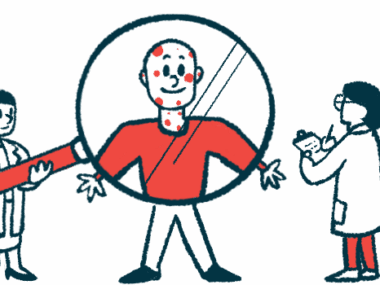MRI, Ultrasound May Help in Early Diagnosis of Juvenile Sjögren’s
Written by |

Magnetic resonance imaging (MRI) and ultrasounds can detect inflammation and lesions in the salivary glands that are suggestive of primary juvenile Sjögren’s syndrome (JSS) before dryness symptoms begin.
These tests can help diagnose the disorder early, according to a recent case study that described the progression of JSS in a girl from age 10 to 17.
The report, “Juvenile onset of primary Sjogren’s syndrome: changes in imaging findings during a 7-year progression,” was published in the journal Clinical and Experimental Rheumatology.
The girl at age 10 had redness on the skin of her cheeks without dryness in her mouth or eyes. Her physicians diagnosed her with JSS based on blood tests that showed raised antibody levels and a biopsy that revealed inflammation in her salivary glands.
They treated her with an immunosuppressive agent and corticosteroids. The dose of corticosteroids allowed her to grow appropriately and did not weaken her bones.
At ages 13 and 14, her blood amylase levels increased and remained high after that. Amylase is an enzyme that helps break down carbohydrates, and excessive blood levels of this enzyme may signal an issue with the salivary glands or the pancreas.
Sjögren’s is characterized by fatty tissue breakdown, lumps, and swelling in the salivary glands. MRI scans showed lumps and swelling in the child’s right and left parotid glands from age 10, which progressively worsened from age 14. She did not begin experiencing fatty tissue breakdown until age 16; even then, it was minor.
At age 16, she developed inflammation in her left parotid gland, which resolved after three days of antibiotic treatment. Two weeks later, she underwent tests to check if she was producing enough tears and saliva to keep her eyes and mouth moist. Tests showed she was not producing enough tears. Although her antibody levels had been high since age 10, they dramatically increased at age 17. She did not experience any dryness (sicca) symptoms.
“It has been reported that patients with JSS have fewer sicca symptoms than those with adult SS and that recurrent parotitis [painful swelling of the parotid glands] is the most common early symptom of JSS,” the researchers wrote.
“Our patient developed acute parotitis at age 16 without sicca symptoms during the follow-up. Periodic MRI showed progressive punctuate sialectasis [lumps and swelling of the salivary gland] suggestive of SS before the development of parotitis, suggesting that MRI can detect early slight abnormalities in JSS,” they wrote.
Since Sjögren’s causes inflammation and changes in the salivary glands before fatty tissue breakdown, the researchers suggest that checking for changes in the salivary glands could help diagnose JSS early.
While helpful, labial biopsies are an invasive tool for diagnosing JSS. This study suggests that MRI and ultrasounds could be a noninvasive alternative to diagnose and monitor the condition.







